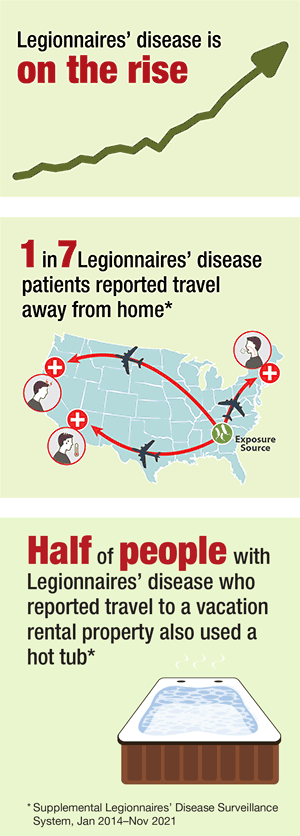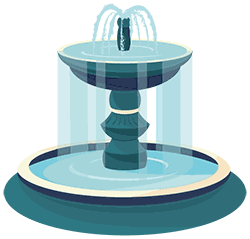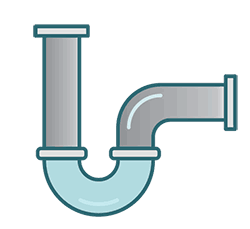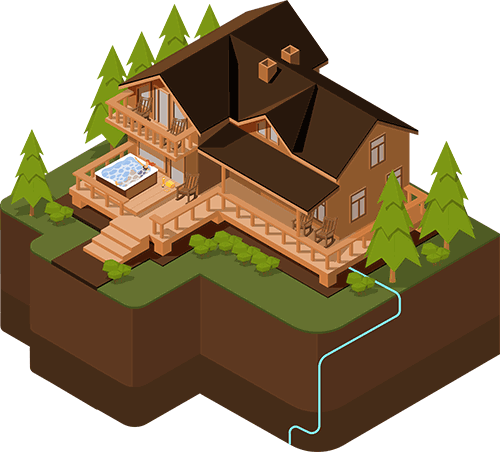Considerations for Vacation Rental Owners and Managers: How to Prevent Legionnaires’ Disease

Legionnaires’ disease is a serious type of pneumonia (lung infection) caused by Legionella bacteria. About 1 in 10 people who get Legionnaires’ disease die from it. Nearly 15% of Legionnaires’ disease patients reported staying overnight at hotels, private homes, or vacation rental properties.
Take steps to prevent Legionella growth and spread at your rental properties to help keep you, your guests, and housekeeping staff safe.

How can guests get sick from Legionella at your rental property?
Guests can be exposed to Legionella when it grows in fixtures and devices like showerheads, faucets, hot tubs, and decorative fountains. When people use or are near these items, they can breathe in small water droplets (mist). If those droplets contain Legionella, people can get Legionnaires’ disease. Conditions that help Legionella grow include:
- Slowly moving or stagnant water
- Inadequate levels of disinfectant (e.g., chlorine)
- Warm water temperatures (77–113°F)
- Presence of sediment, scale, or biofilm. Sediment and scale are a build-up of minerals in a water system and use up disinfectant. Biofilm is made up of germs and the slime they secrete. Biofilm sticks to and grows on any surface that stays wet.
Vacation rental properties and hot tubs
About half of Legionnaires’ disease patients who reported travel and staying at a vacation rental property also reported using a hot tub. To help reduce the risk of Legionella in hot tubs, vacation property owners and managers should:
- Monitor and maintain adequate disinfectant levels (3–10 ppm for free chlorine or 4–8 ppm for bromine) and pH (7.2–7.8), even when the hot tub is not in use.
- Follow manufacturer recommendations for cleaning or scrubbing the hot tub (e.g., daily inspection for and removal of biofilm), replacing the filter and water, and practicing all other maintenance activities.
- Consider installing an automatic disinfectant system for the hot tub rather than handfeeding disinfectant.
- Follow any applicable local, state, territorial, federal, or tribal laws, which may differ from CDC recommendations.
If you are concerned about Legionella growth or if you have been made aware of guests diagnosed with Legionnaires’ disease after using a hot tub at one of your properties, arrange for water samples to be collected and tested for Legionella. After those water samples have been collected, disinfect the hot tub. Contact your state or local public health agency for next steps and recommendations. Additional guidance on hot tub sampling and disinfection procedures are available in the Disinfection of Hot Tubs guidance.

Below are additional resources on hot tub maintenance to help protect your guests and community from Legionnaires’ disease:
- Operating Public Hot Tubs
- Controlling Legionella in Hot Tubs
- Disinfection of Hot Tubs that Contain Legionella
- Residential Pool or Hot Tub Owners Disinfection & Testing
Legionella can grow and spread in other areas of vacation rental properties
In addition to hot tubs, common sources of exposure to Legionella in vacation rental properties include other devices that make water droplets small enough to float in the air. These include showerheads, faucets, and decorative fountains.

Showerheads: Legionella can grow in and spread through showerheads if they have not been used regularly (e.g., a week or more), if they have not been replaced or cleaned in a long time (e.g., there is visible buildup on the aerators), or if there are low disinfectant levels in the water.

Unoccupied rooms/properties: Low or irregular occupancy decreases water flow and can decrease disinfectant levels in water. If faucets or showerheads have not been used for a week or more, flush them shortly before guests arrive. Additional instructions are available on how to flush faucets and showerheads.

Decorative fountains: Operate and maintain all fountains according to manufacturer recommendations. Minimum cleaning frequency recommendations vary by fountain size and can be found in the Legionella Control Toolkit. Exposure to warm air, heat-generating submerged lights, or other factors can increase the water temperature into the range favorable for Legionella growth (77–113°F). Additional strategies for controlling Legionella, such as adding disinfectant, will be required.

Water supply: Below are considerations to lower the risk of Legionella growth in your property’s plumbing system.
- Public water system (municipal water, water utility): Events that disrupt the delivery of water to the plumbing system (e.g., water main breaks, water utility repairs) can allow dirt to enter the system and use up disinfectant. Sign up (opt-in) for local alerts to stay informed about such public water system events and follow water advisory recommendations.
- Well water: To maintain safe drinking water, private well owners are responsible for testing the quality of their drinking water and maintaining their own wells. For more information and technical assistance on well construction, maintenance, water quality, and water treatment issues, contact your state or local health department, a local agricultural extension agency, or a private well contractor.
- Water softeners and filters: Follow the manufacturer recommendations to properly maintain and operate water softeners and filters. Some filters, like those typically found on faucets or devices like ice machines, use carbon to get rid of disinfectant residual to improve the taste of the water. Legionella can still grow in these filters if not properly maintained.
- Water heater: Set your property’s water heater at or above 120°F to minimize the growth of Legionella. A hotter water temperature of 130–140°F can kill many harmful germs, but also increases the risk of scalding. Be sure to follow state and local laws related to scalding. If the water heater is set above 120°F, make sure to take extra precautions to mix cold and hot water (using thermostatic mixing valves) at the faucet or shower to avoid scalding. This is especially important if young children, older adults, or other people at increased risk of scalding stay in your property. In addition to keeping the water heater at recommended temperatures, routinely flush the water heater according to manufacturer recommendations. For rental properties that are part of a condominium or apartment building, check if the water heater is maintained by the building owner or the homeowner’s association. Multi-unit buildings with centralized hot water systems should have a water management program to reduce Legionella growth and spread.

Below are additional resources on how to protect your guests and community from Legionnaires’ disease:
